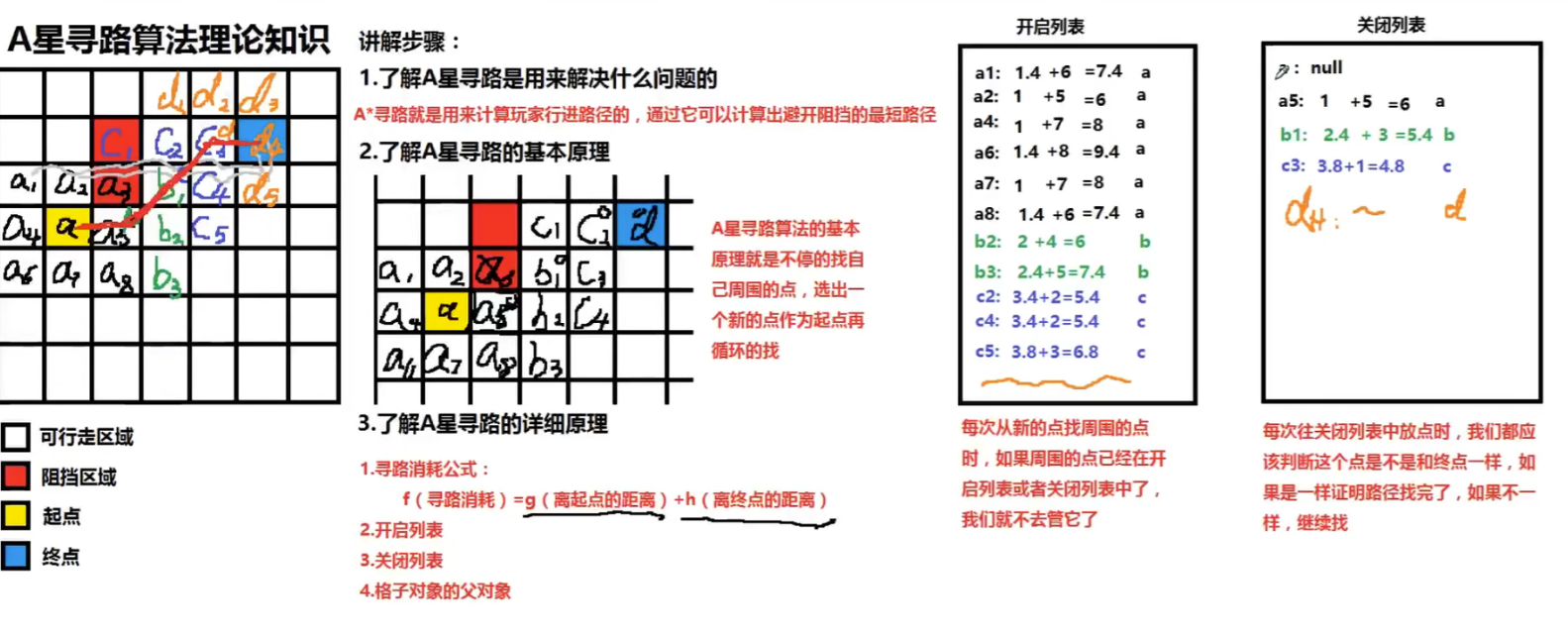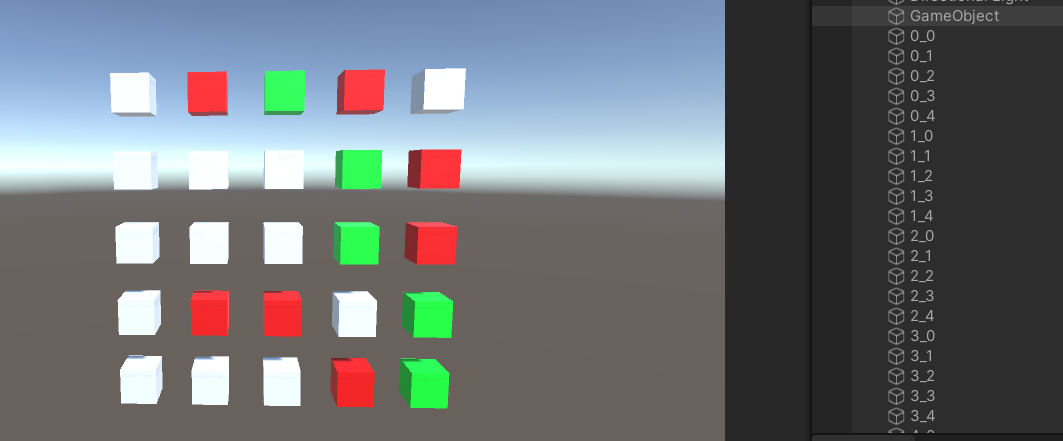1
2
3
4
5
6
7
8
9
10
11
12
13
14
15
16
17
18
19
20
21
22
23
24
25
26
27
28
29
30
31
32
33
34
35
36
37
38
39
40
41
42
43
44
45
46
47
48
49
50
51
52
53
54
55
56
57
58
59
60
61
62
63
64
65
66
67
68
69
70
71
72
73
74
75
76
77
78
79
80
81
82
83
84
85
86
87
88
89
90
91
92
93
94
95
96
97
98
99
100
101
102
103
104
105
106
107
108
109
110
111
112
113
114
115
116
117
118
119
120
121
122
123
124
125
126
127
128
129
130
131
132
133
134
135
136
137
138
139
140
141
142
143
144
145
146
147
148
149
150
151
152
153
154
155
156
157
158
159
160
161
162
163
164
165
166
167
168
169
170
171
172
173
174
175
176
177
178
179
180
181
182
183
184
185
186
187
188
189
190
|
public class AStarManager
{
private static AStarManager instance;
public static AStarManager Instance
{
get
{
if (instance == null)
instance = new AStarManager();
return instance;
}
}
private int mapW;
private int mapH;
public AStarNode[,] nodes;
private List<AStarNode> openList = new List<AStarNode>();
private List<AStarNode> closeList = new List<AStarNode>();
public void InitMapInfo(int w, int h)
{
this.mapH = h;
this.mapW = w;
nodes = new AStarNode[w, h];
for (int i = 0; i < w; i++)
for (int j = 0; j < h; j++)
{
AStarNode node = new AStarNode(i, j, Random.Range(0, 100) < 20 ? E_Node_Type.stop : E_Node_Type.walk);
nodes[i, j] = node;
}
}
public List<AStarNode> FindPath(Vector2 startPos, Vector3 endPos)
{
AStarNode starNode = nodes[(int)startPos.x, (int)startPos.y];
AStarNode endNode = nodes[(int)endPos.x, (int)endPos.y];
if (startPos.x >= mapW || startPos.x < 0||
startPos.y >= mapH || startPos.y < 0||
endPos.x >= mapW || endPos.x < 0 ||
endPos.y >= mapH || endPos.y < 0)
{
Debug.Log("开始或者结束点在地图格子范围外");
return null;
}
AStarNode start = nodes[(int)startPos.x, (int)startPos.y];
AStarNode end = nodes[(int)endPos.x, (int)endPos.y];
if (start.type == E_Node_Type.stop || end.type == E_Node_Type.stop)
{
Debug.Log("开始或者结束点是障碍");
return null;
}
closeList.Clear();
openList.Clear();
start.father = null;
start.f = 0;
start.g = 0;
start.h = 0;
closeList.Add(start);
while(true)
{
FindNearOpenList(start.x - 1, start.y - 1, 1.4f, start, end);
FindNearOpenList(start.x, start.y - 1, 1, start, end);
FindNearOpenList(start.x + 1, start.y - 1, 1.4f, start, end);
FindNearOpenList(start.x - 1, start.y, 1, start, end);
FindNearOpenList(start.x + 1, start.y, 1, start, end);
FindNearOpenList(start.x - 1, start.y + 1, 1.4f, start, end);
FindNearOpenList(start.x, start.y + 1, 1, start, end);
FindNearOpenList(start.x + 1, start.y + 1, 1.4f, start, end);
if (openList.Count == 0)
{
Debug.Log("死路");
return null;
}
openList.Sort(SortOpenList);
closeList.Add(openList[0]);
start = openList[0];
openList.RemoveAt(0);
if (start == end)
{
List<AStarNode> path = new List<AStarNode>();
path.Add(end);
while (end.father != null)
{
path.Add(end.father);
end = end.father;
}
path.Reverse();
return path;
}
}
}
private int SortOpenList(AStarNode a, AStarNode b)
{
if (a.f > b.f)
return 1;
else if (a.f == b.f)
return 1;
else
return -1;
}
private void FindNearOpenList(int x, int y, float g, AStarNode father, AStarNode end)
{
if (x >= mapW || x < 0 || y >= mapH || y < 0 )
return;
AStarNode node = nodes[x, y];
if (node == null ||
node.type == E_Node_Type.stop ||
closeList.Contains(node)||
openList.Contains(node))
return;
node.father = father;
node.g = father.g + g;
node.h = Mathf.Abs(end.x - node.x) + Mathf.Abs(end.y - node.y);
node.f = node.g + node.h;
openList.Add(node);
}
}
|



